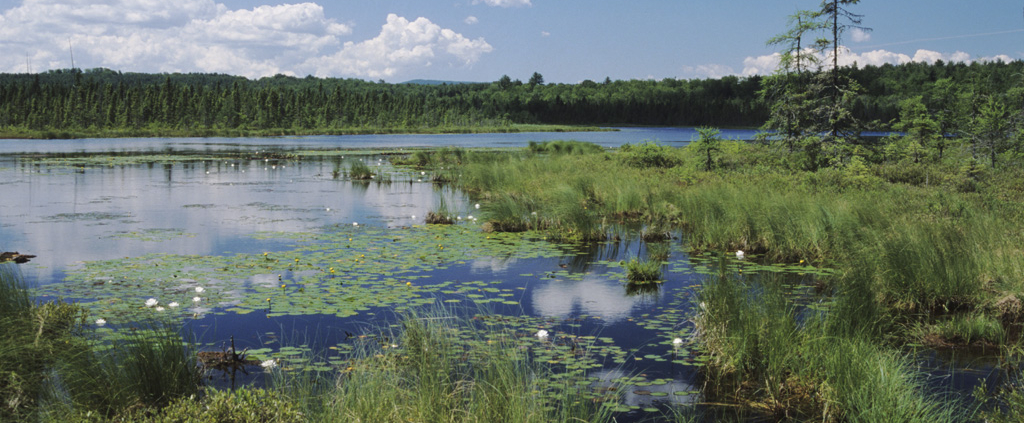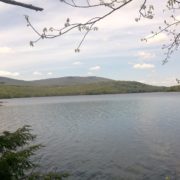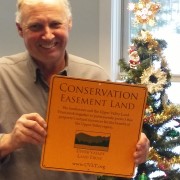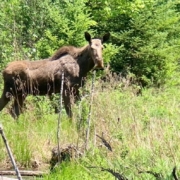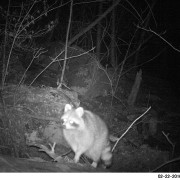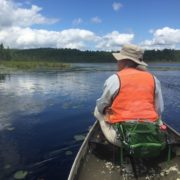American Wetlands Month: Spotlighting Upper Valley Bogs
May is American Wetlands Month, and we’re celebrating by exploring the four types of wetlands (marshes, swamps, bogs, and fens) right here in the Upper Valley.
If you’ve missed the first two posts in our series, catch up now with our posts on marshes and swamps and discover why wetlands are crucial to our local ecosystem and our community’ safety.
This week, we’re diving into a truly distinct ecosystem: the bog.
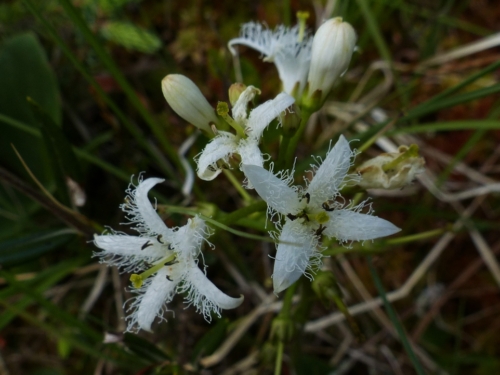
Plant Life in the Bear Pond Conservation Area
What Is a Bog?
Bogs aren’t as well-known as marshes or swamps — but they have just as much to offer in beauty, biodiversity, and ecological importance.
Bogs are a type of peatland, meaning they are dominated by peat, a spongy material made up of decaying plants, primarily sphagnum moss. But there are several different types of peatlands — so what makes bogs special?
The answer lies in how they are formed. There are two primary ways, each of which can take centuries or longer. One type of bog forms when a lake with limited inflow becomes filled with plant matter, allowing sphagnum moss to grow out from the lake’s edges. As moss dies off, more grows over it, eventually creating a thick peat mat. The other type occurs when sphagnum moss grows over a depressed area of dry land with poor drainage and traps moisture until it fills in with liquid. Sometimes, the peat layers in bogs become so solid people can walk on them (though this is both risky to the walker and harmful to the environment), with an odd shaking effect that gives them the moniker “quaking bogs.”
Unlike other types of peatland, most of the water in a bog comes from precipitation rather than water inflow. This lack of water flow and the highly acidic environment created by the moss make it difficult for most plant species to survive — and allows species that have specially adapted to this unique environment to thrive.
Where Are Bogs Found, and Why Do They Matter?
Canada, Russia, and Scandinavia are all home to extensive bogs — in fact, the world’s largest wetland is a bog in Siberia that covers nearly 400,000 square miles. Bogs are not nearly as large or widespread in the United States, but they can be found in the Northeast and in parts of the South, often in former glacial lakes and depressions.
For many years, farmers harvested peat as a heat source and drained bogs for farming. Peat harvesting still occurs today in the US, albeit at a much lesser scale than in Canada, and large swathes of peatland are now in agricultural use. Nearby forestry can also harm delicate bogs. Today, they are frequently drained and filled to make room for new development.
This matters for several reasons. First, we now know that peat bogs are a highly effective carbon store — and carbon that has been stored over thousands of years can be quickly released if a bog is destroyed.
Bogs are also a complex ecosystem home to many distinctive species. In New England, these include common heaths-leatherleaf, Labrador tea, bog laurel, bog rosemary, blueberries, and cranberries, as well as unique plants like carnivorous pitcher plants and sundews, as well as orchids. They also house insects, birds, and animals like bog lemmings, ribbon snakes, Blanding’s and spotted turtles, mink frogs, endangered ringed boghaunter dragonflies, and many more.
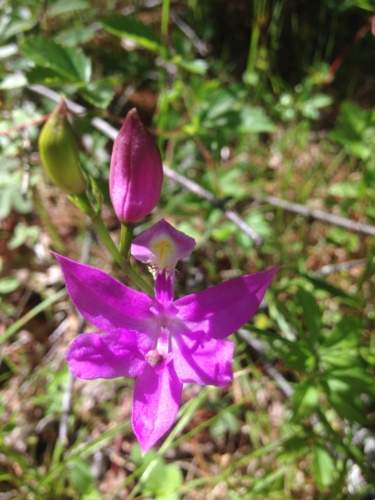
Flower in the Bear Pond Conservation Area
Upper Valley Bogs
The Upper Valley was once highly glaciated, so we’re home to plenty of bogs, including several conserved by the UVLT.
One of the most notable lies within the UVLT’s Bear Pond Natural Area, a 900-acre property in Canaan that includes a 60-acre quaking bog rated by New Hampshire’s Natural Heritage Inventory Program as one of the best in the state. This bog is considered a “kettle pond,” meaning that the depression it fills was created when a glacier retreated thousands of years ago. You can also spot a floating mat of sphagnum moss within the wetlands in the Cream Street Conservation Area in Thetford.
Wherever you go, remember that bogs are highly fragile ecosystems. It’s important to stay on the trails and avoid disturbing plant life. And be careful — bogs can be much deeper than they appear!
Stay tuned next week to learn about the last type of wetland, fens!

